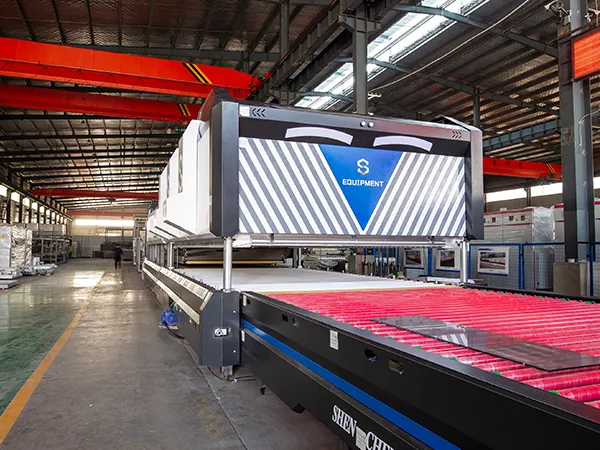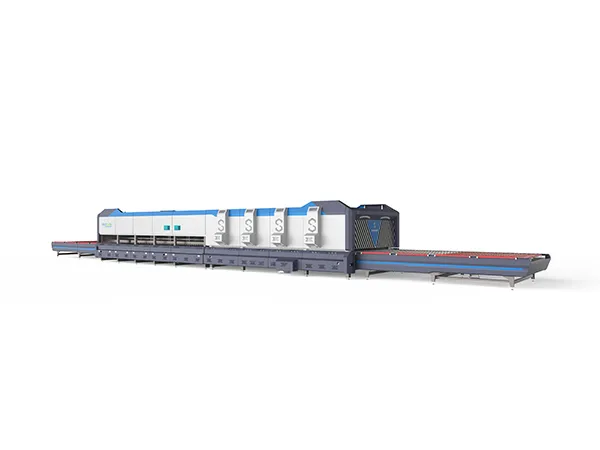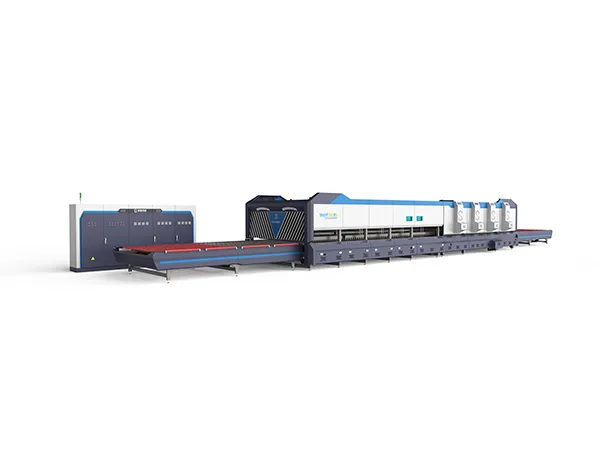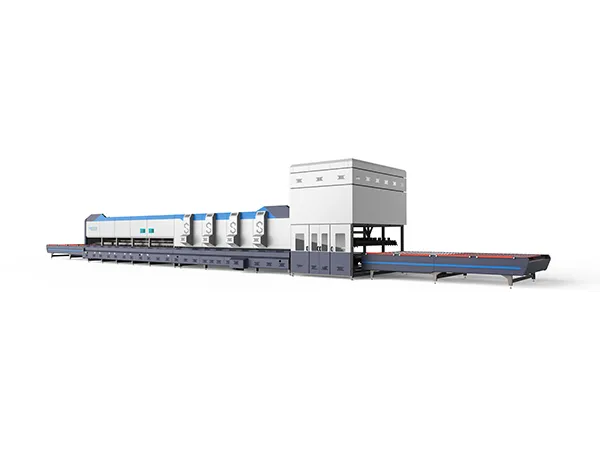The electricity consumption of a glass tempering furnace varies widely depending on several factors, such as the furnace size, type (horizontal or vertical), efficiency, the thickness and type of glass being processed, and production capacity. However, here are some general estimates:
Glass tempering furnace hourly power consumption
Small Glass Tempering Furnaces: These can consume anywhere from 50 to 200 kWh per hour.
Medium Glass Tempering Furnaces: These typically consume between 200 to 500 kWh per hour.
Large Industrial Glass Tempering Furnaces: These can consume upwards of 500 to 1000 kWh or more per hour, depending on their size and capacity.
Factors Affecting Electricity Consumption of a Glass Tempering Furnace

Furnace Size and Type:
Small Furnaces: Usually consume between 50 to 200 kWh per hour.
Medium Furnaces: Typically consume between 200 to 500 kWh per hour.
Large Furnaces: Can consume 500 to 1000 kWh or more per hour.
Type of Furnace: Horizontal furnaces generally consume more electricity compared to vertical furnaces due to differences in heating mechanisms and loading processes.
Glass Thickness and Type:
Thicker glass requires more heating time and energy, leading to higher electricity consumption.
The type of glass (e.g., low-emissivity, laminated, or tinted glass) may also affect heating requirements.
Production Capacity and Batch Size:
Higher production capacities and larger batch sizes typically result in higher energy consumption due to increased heating and cooling requirements.
Heating and Cooling Cycles:
The number of heating and cooling cycles per hour affects energy use. More frequent cycles require more energy.
Furnace Efficiency and Technology:
Modern, energy-efficient furnaces use less electricity than older models. Advanced technologies, such as optimized insulation and heat recovery systems, can reduce consumption.
Ambient Temperature and Insulation:
Ambient temperature can affect the energy required to reach and maintain the desired furnace temperature. Well-insulated furnaces retain heat better and consume less energy.

Type of Heating Elements:
The type and quality of heating elements (e.g., electric resistance, infrared, or gas burners) impact electricity consumption.
Operational Practices:
Optimized loading and unloading times, proper maintenance, and minimizing downtime can help reduce energy consumption.
For precise consumption rates, consulting the furnace manufacturer or referring to the specific model's technical specifications is recommended.









